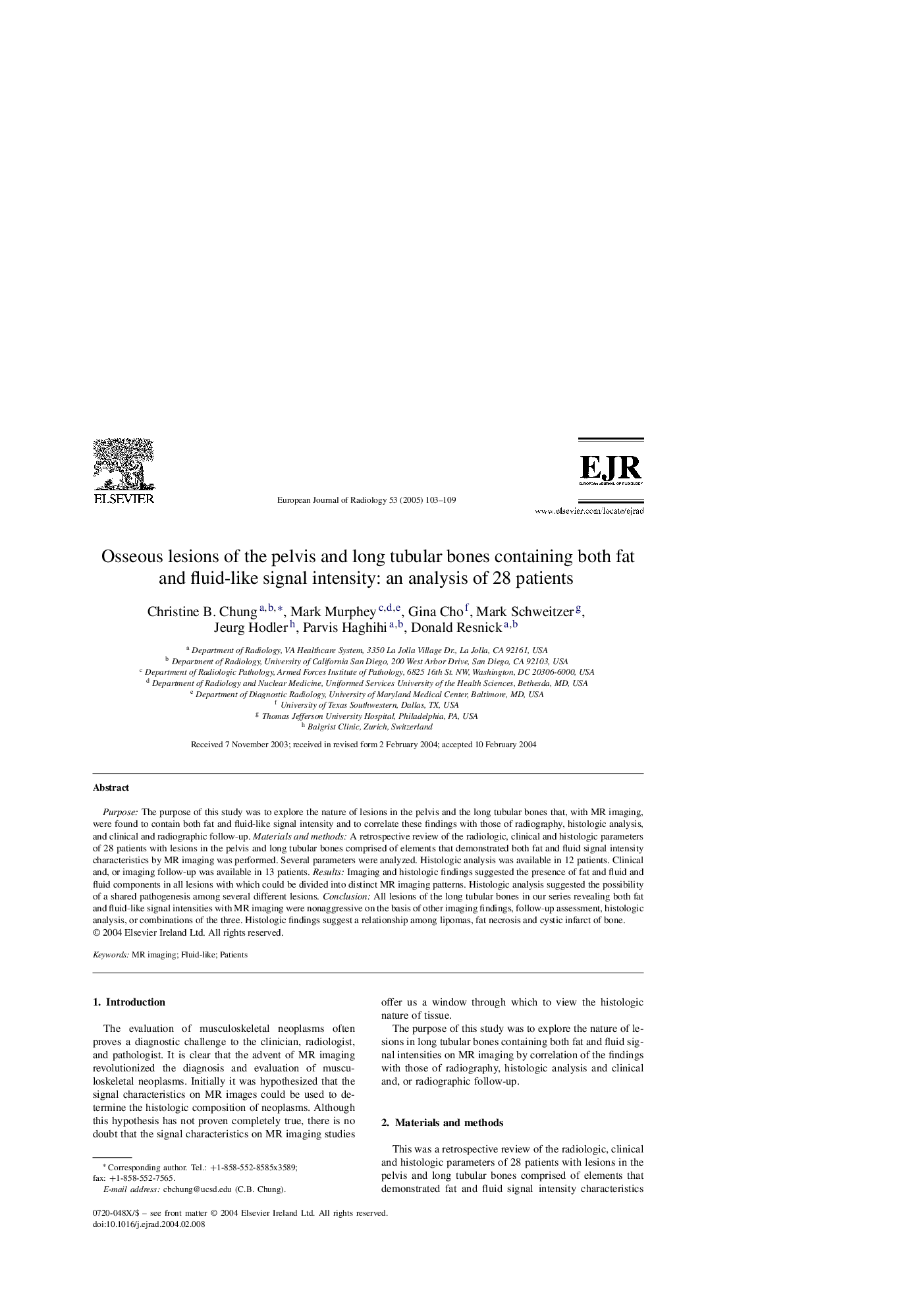| Article ID | Journal | Published Year | Pages | File Type |
|---|---|---|---|---|
| 10097653 | European Journal of Radiology | 2005 | 7 Pages |
Abstract
Purpose: The purpose of this study was to explore the nature of lesions in the pelvis and the long tubular bones that, with MR imaging, were found to contain both fat and fluid-like signal intensity and to correlate these findings with those of radiography, histologic analysis, and clinical and radiographic follow-up. Materials and methods: A retrospective review of the radiologic, clinical and histologic parameters of 28 patients with lesions in the pelvis and long tubular bones comprised of elements that demonstrated both fat and fluid signal intensity characteristics by MR imaging was performed. Several parameters were analyzed. Histologic analysis was available in 12 patients. Clinical and, or imaging follow-up was available in 13 patients. Results: Imaging and histologic findings suggested the presence of fat and fluid and fluid components in all lesions with which could be divided into distinct MR imaging patterns. Histologic analysis suggested the possibility of a shared pathogenesis among several different lesions. Conclusion: All lesions of the long tubular bones in our series revealing both fat and fluid-like signal intensities with MR imaging were nonaggressive on the basis of other imaging findings, follow-up assessment, histologic analysis, or combinations of the three. Histologic findings suggest a relationship among lipomas, fat necrosis and cystic infarct of bone.
Keywords
Related Topics
Health Sciences
Medicine and Dentistry
Radiology and Imaging
Authors
Christine B. Chung, Mark Murphey, Gina Cho, Mark Schweitzer, Jeurg Hodler, Parvis Haghihi, Donald Resnick,
